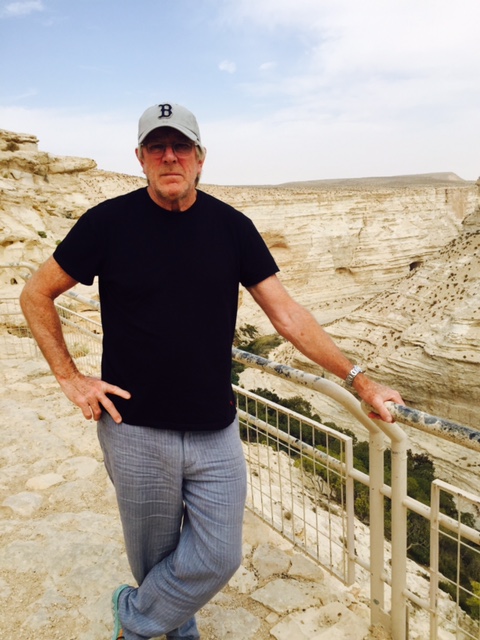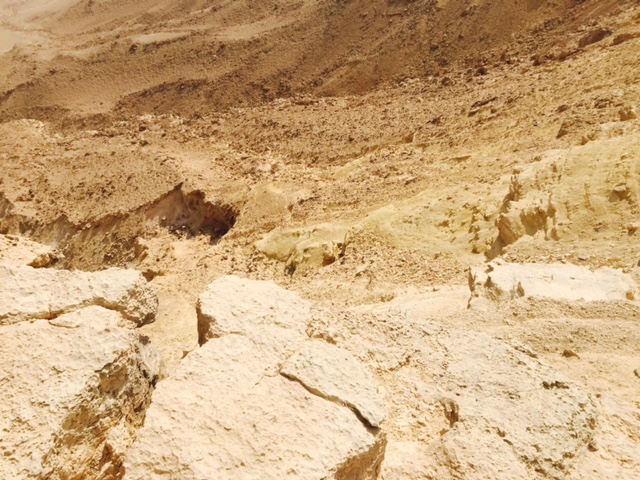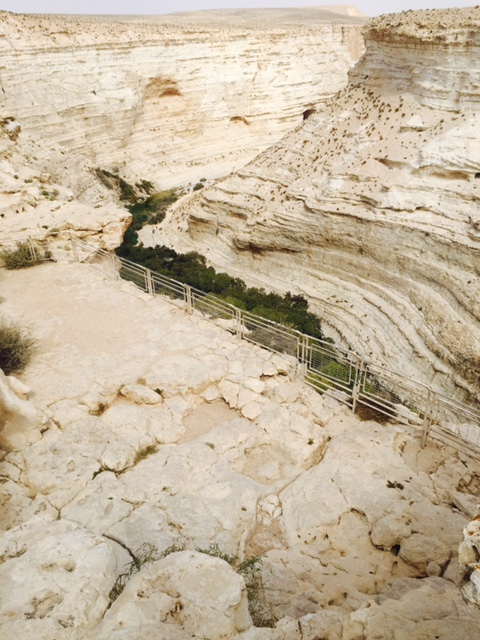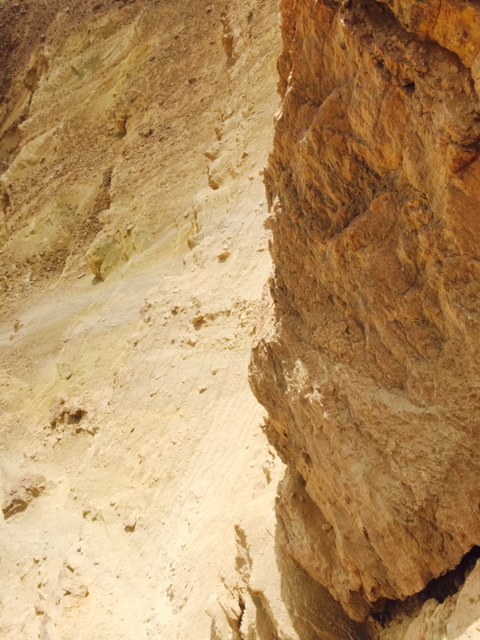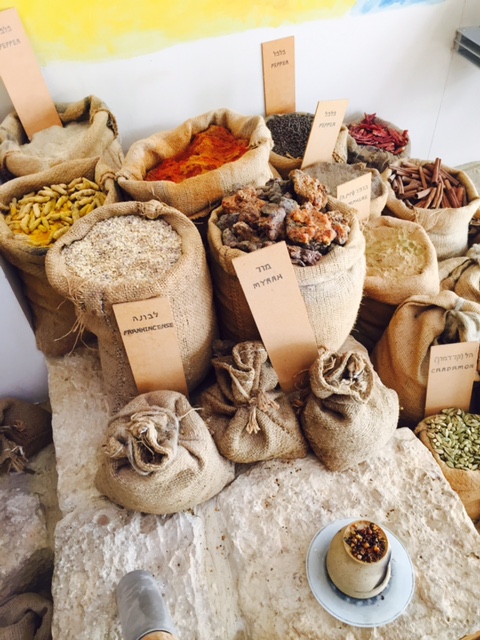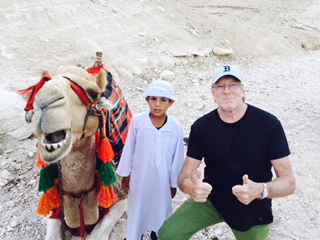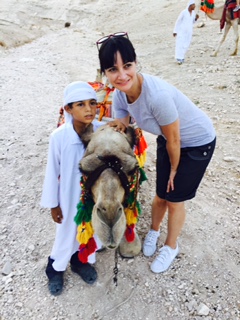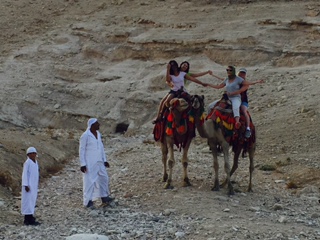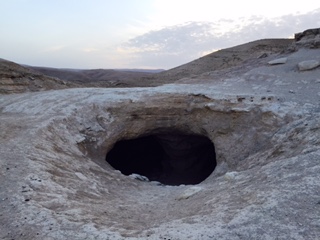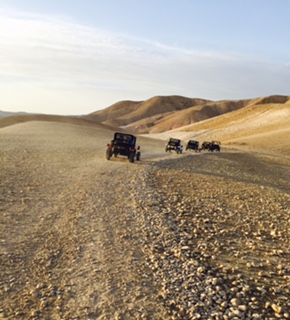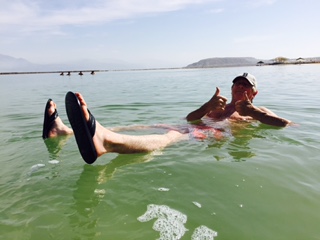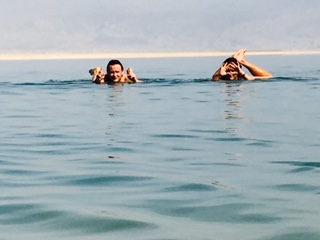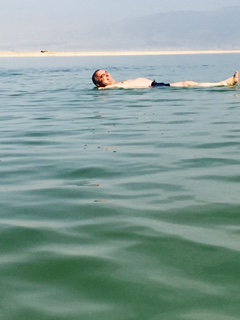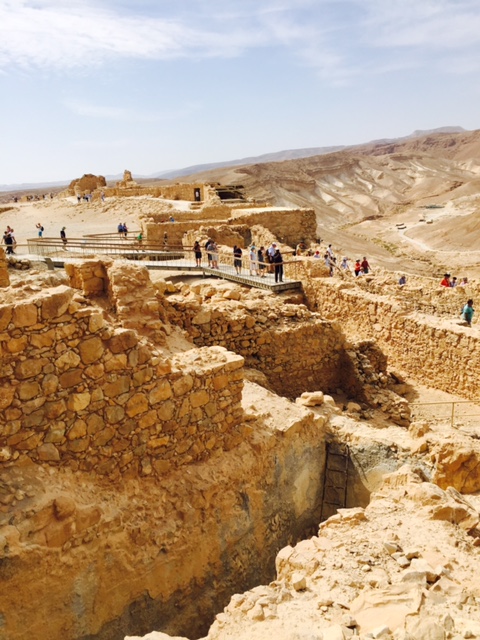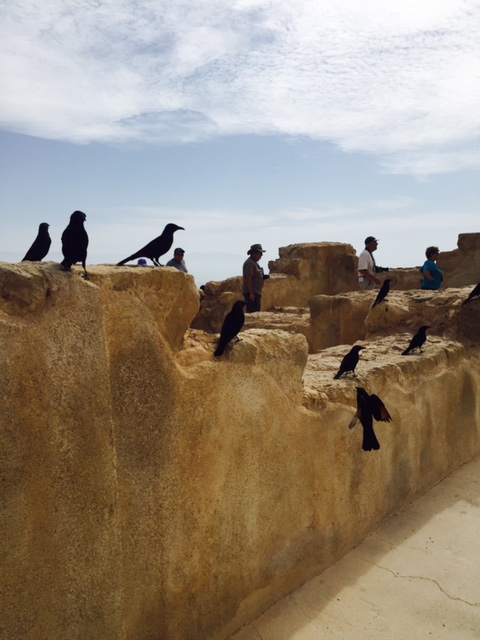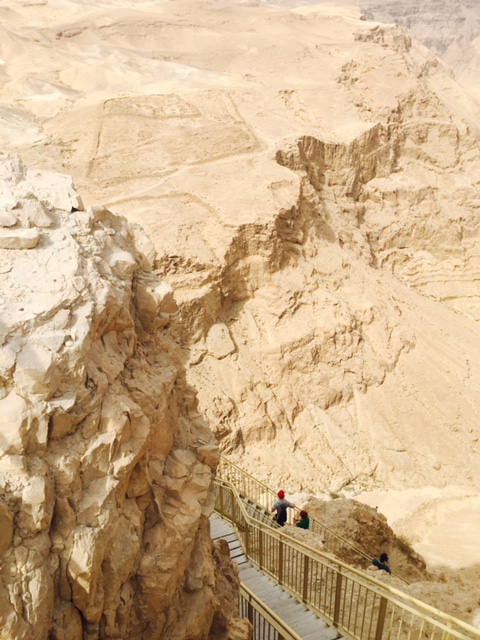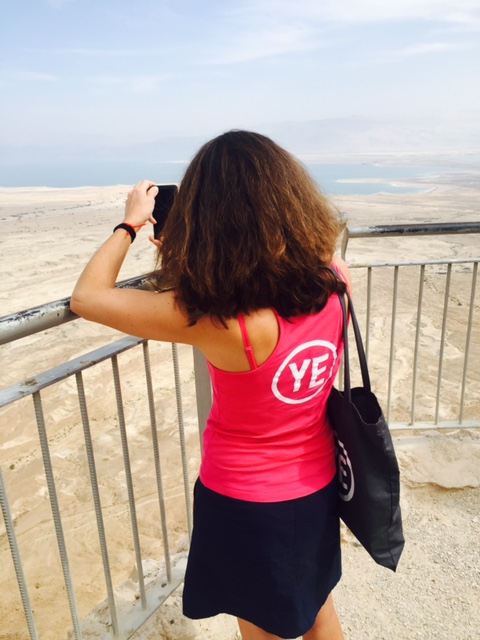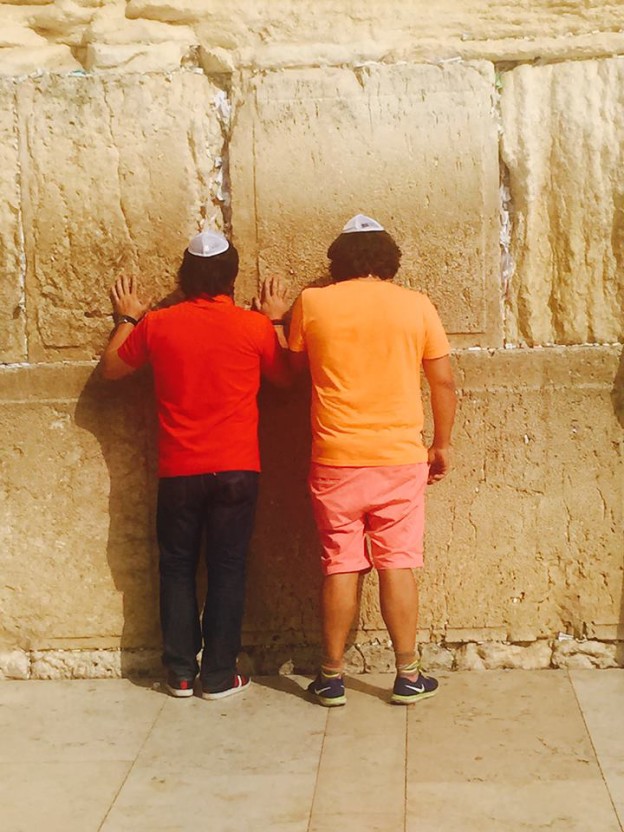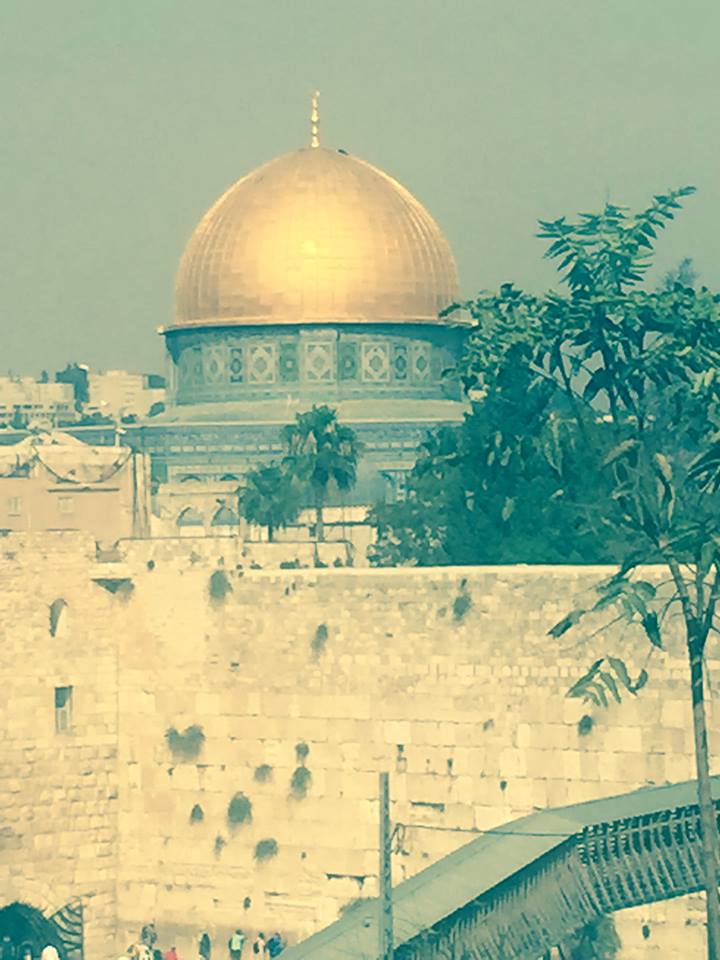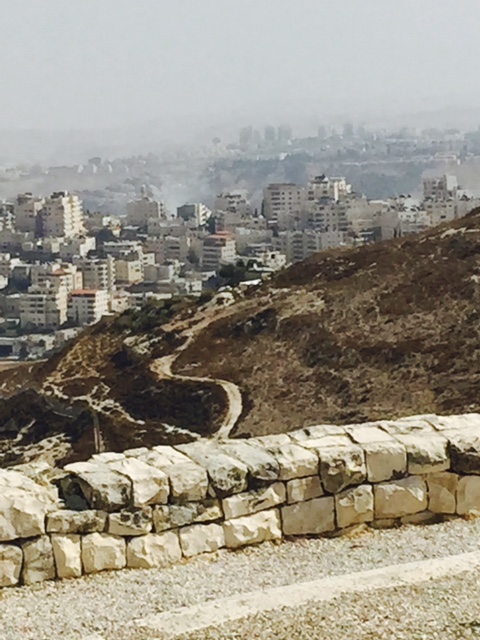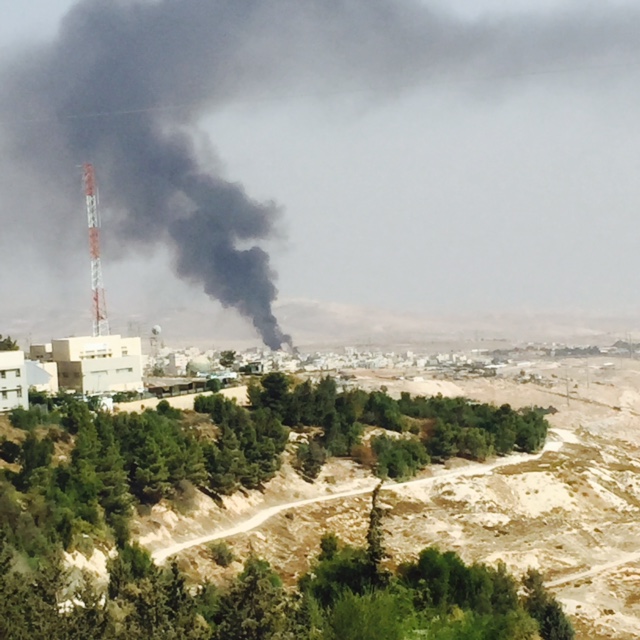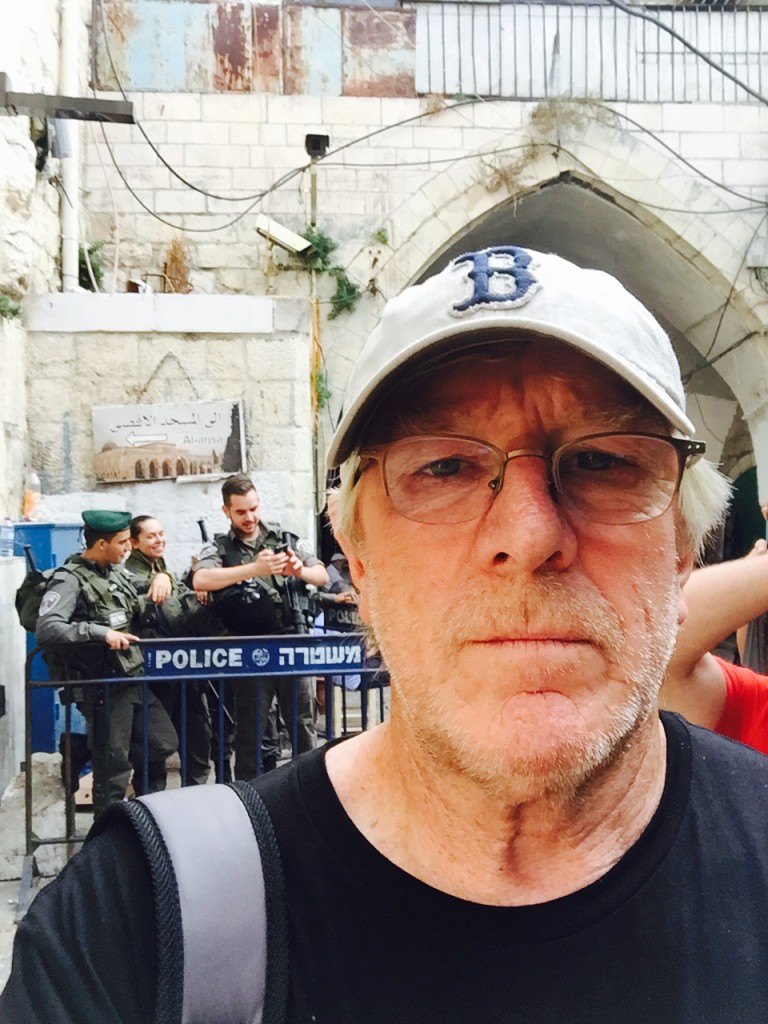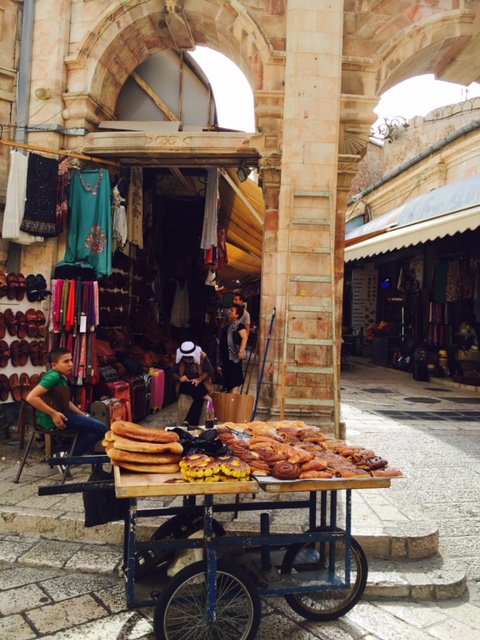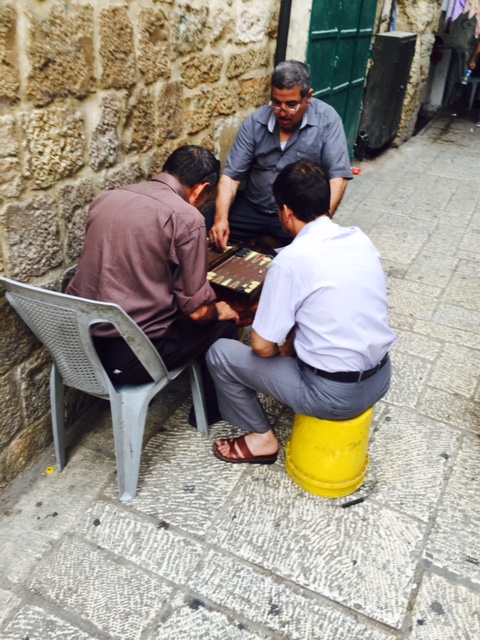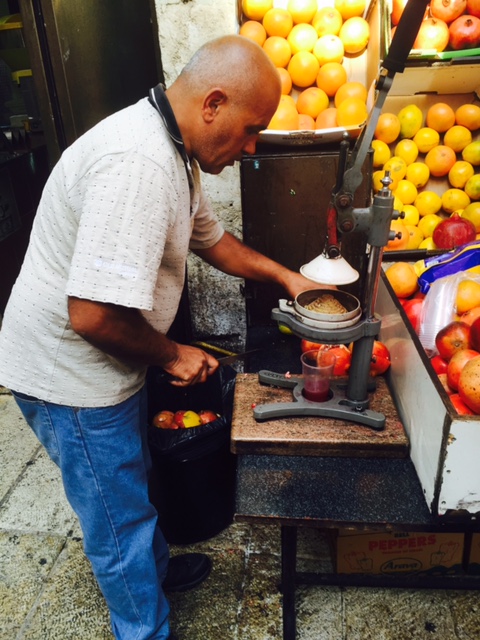The idea was that we would drive down to Eilat, the hedonistic playground for Israelis searching for even more sun, on the glorious Red Sea. In between, we would stop and take in the spectacular scenery that featured heavily in my guidebook. Of course, what we had not planned for was our driver who was a smart 70 year old man with 5 years of military history and had seen it all. He had that clipped Israeli accent and his English was not brilliant. Worst of all, he liked to drive fast – like 100 mph fast. Getting the guide to stop at a vineyard here or a rock formation there was like bargaining in the bazaar. In the end, I had to pretend that I was car sick to get him to stop at important historical sites. He wanted to speed down to Eilat and dump us at the border crossing. I wanted to stop serendipitously because the scenery was so incredibly spectacular. It would be a difficult day but the reward was that we got to see Avdat and the Makhtesh Ramon.
Today was about the Nabataeans and frankincense and myrrh in Avdat. This was the desert where the incense traders moved their stuff from Yemen to Petra and across to the Mediterranean ports. I have some frankincense in my spice jar at home and everything that sits inside of that spice jar reminds me of the scents of Arab lands like Morocco, Egypt, and all of these magical places I have been to. So trying to imagine being on a camel 1,000 years ago, bringing the riches at that time for onward sale to the Europeans, was an amazing thought. This is the land of David Ben-Gurion’s desert home; Ben-Gurion being the founding father of Israel. It is a land of vineyards on carefully irrigated land. It is a lunar landscape of “grand canyons” that reminded me instantly of the western part of the USA. And I had to negotiate with the driver who clearly had seen it all before.
The Makhtesh Ramon reserve is the largest protected area in Israel. It is vast with multicolored sandstone and volcanic rocks and is 300 meters deep, eight kilometers wide, and 40 kilometers long. The visitor’s center was one of those strange places often encountered in Israel where the service was less than optimal again. The information booth was staffed by pretty uninterested people and the lunch place had arguably the worst service we had encountered so far. No one seemed to care and they just seemed tired of dealing with tourists. The funny thing was that there were not that many of us! No matter, we grabbed more hummus, took some fresh juice, and watched some crazy guys cliff diving.
It was difficult to leave but the driver could not wait to pack us into his fancy Mercedes and get us into the drop-off point by the border. He spoke rarely except to point out the date palms which were prolific, the milk farm trucks which amazed me, and when we said that we were heading to Jordan, he looked back at us and said, “…Why?” He will be back in Tel Aviv in less than two hours. I think that he felt sorry for us.

